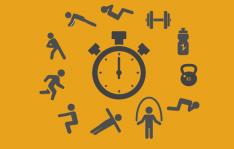With the races plotted and your longest training days "penciled in," then it's time to work two ends to the middle. What I mean by that is plotting the longest workout(s) and the build-up to the long workouts. This fills the gap between your current fitness and the necessary or desired race day fitness. For some people the build process might go right up to the week before the race. For others, weekly workout time might remain the same for several weeks and it is the intensity or speed within key workouts that changes. More on that in the next section.
This training and race calendar planning process may require several drafts, until you get a plan that is reasonable for your fitness and other fun events that are planned. Most of the time I try to plan recovery or reduced volume weeks for times of travel for business, pleasure or any other fun events that do not necessarily involve swimming, cycling and running. Though, it is often nice to get in a short run when traveling to keep stress at bay and keep your fitness going too. A 20- or 30-minute run can do wonders.
More: 8 Training Drills for Travelers
If there is a specific time I want, how do I achieve it?
The first question I ask is, "Where did you get the goal time and why do you think it's reasonable to achieve?" If an athlete is very experienced, time goals are tougher to achieve. Speed gains in the five to 10 percent range are very hard for experienced athletes, not as hard for those who have not been regularly training and racing.
Usually within the answer is a breakdown of where the total race time gains will be made and on what kind of course. Most of the time, beating prior race performances is a good goal because you have data on that event and you can estimate where time gains can be made.
Using past performance data and performance goals, do a gap analysis. If the gaps are more than 10 percent between past performance and desired performance, try aiming for smaller gains. The risk of aiming for too much too soon is burnout or injury. There is also a chance that being conservative with your goals, you could overachieve. That's always a nice bonus.
More: How to Set Realistic Time Goals
If you have a lot of time between now and race day, begin doing short segments (60 seconds or less cycling and running, 13.5 to 25 yards or meters swimming) at your desired goal race pace. Teach your body how to move efficiently at the goal pace, with generous recovery intervals (two to four minutes.) Doing this helps you prepare for higher training loads later in the training plan.
Working again forward and backward, plot workouts that move from a preparation or base phase of training toward pre-competitive and competitive training where the race pace segments become longer and rest becomes shorter. Those with ample training time can move to workouts that are slightly faster than race pace and recovery is equal to the work time.
It gets complicated.
When I conduct training plan workshops and seminars for self-coached athletes, we go through the race calendar planning process that I've outlined here. During the sessions the comment I get most often is, "Wow, it gets complicated."
Yes, especially if you want a training plan that is customized to your goals and lifestyle.
If you want a place to begin, take a look at the ready-to-use training plans that I've built in my books or on internet platforms. These workout plans can give you a place to begin. Once you see the pattern of progression, modify the workouts to meet your own specific needs.
More: How to Adjust Your Training Plan to Your Life
 Search for your next triathlon.
Search for your next triathlon.
- 2
- of
- 2
About the Author










Discuss This Article